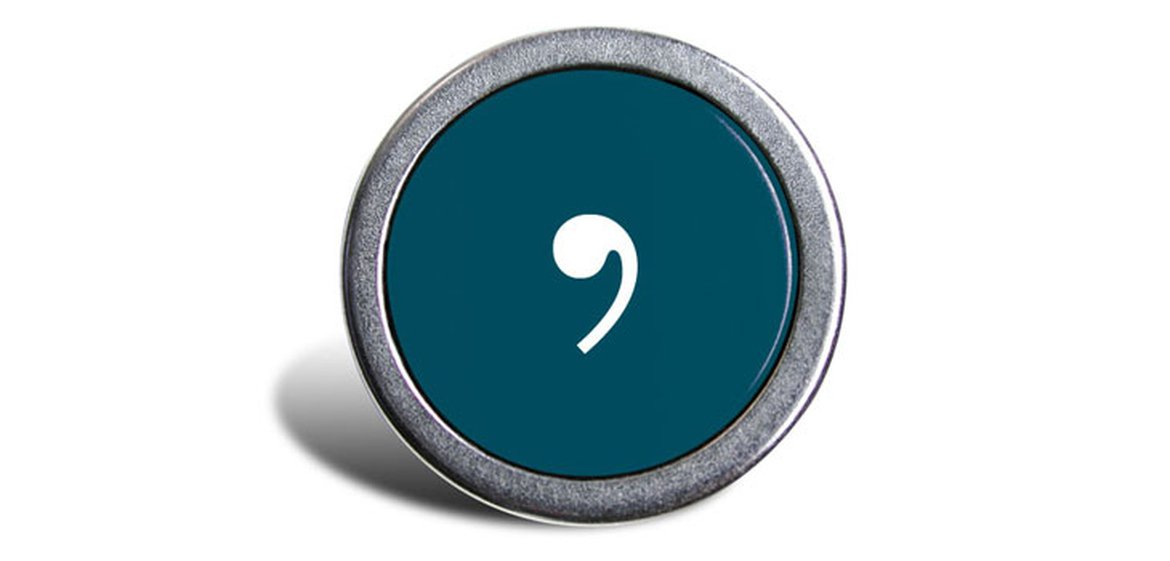Apostrophe, Apostrophe…Wherefore Art Thou?
Feb. 22, 2019

Last night I had a strange dream. Well, nightmare is more like it. For some reason, I found myself transported back to the early 80s. And I was sitting in a big, cold exam hall poised to re-write the Law School Admission Test.
Most of the LSAT was fine, actually. Right up my alley, in fact, since it required a lot of reading and writing. But the snake in the grass for me was those blasted logic questions. You might know the ones: Mr. Black and Mr. Brown get on a bus. Mr. Black sits in front of Mr. Blue. Mrs. Green moves two seats back. Question: Where is Mr. Orange sitting? Huh? What?
Richard, my beloved partner – and a chip off the old Mr. Spock block, if ever there was one – quite enjoys logic games and no doubt aced that section of the LSAT. Me, I hated them.
Because I could never quite puzzle them out in time, I decided to take the path of least resistance and simply selected answers at random. My “logic” was that, even on a random selection, I was bound to get at least some of the answers right.
When it comes to the apostrophe, I sometimes have the feeling that people take the same approach. You know there should be an apostrophe – somewhere – so you simply take a stab and hope you get it right, at least some of the time.
Richard insists that you can get better at those logic games. Likewise, I insist that by following a few simple rules, you too can put those pesky little apostrophes (or is it “apostrophe’s”?) in their rightful place.
So, here goes….
The two most common reasons to use an apostrophe are to indicate possession and missing letters.
Here are some examples where the apostrophe indicates possession:
- Bradley Cooper’s voice
- Britain’s exit
- Facebook’s privacy settings
- Donald Trump’s hair
Watch out for plural nouns, however. When there is more than one subject, the apostrophe goes after the “s.” For example:
- the actors’ lines
- the hockey players’ helmets
- organizations’ policies
When apostrophes stand in for missing letters, we usually refer to the resulting word as a contraction. For example:
- He’s the one. [He is the one.]
- Let’s go. [Let us go.]
- We didn’t agree. [We did not agree.]
The one that inevitably trips people up is: “its” and “it’s.” The only time, I repeat, the only time, you use an apostrophe with “its” is when you want to indicate a missing letter. So, if you want to contract “it is” or “it has,” you would write “it’s.”
Let me try to make this clearer. Say you have a dog, and you want to talk about your dog’s tail, but instead of referring to Rover by name, you decide to refer to Rover as “it.” (Sorry, dog lovers, I know your beloved mutt is never just an “it.”) Yes, it would be "Rover's tail” (apostrophe), but if you are referring to your dog as “it”, you would write “its tail” (no apostrophe). You wouldn’t say “it’s tail” (apostrophe) because that actually means “it is tail.” Got it? Good!
The other pair to keep your eye on is: “who’s” and “whose.” In this case, “who’s” is to “it’s” as “whose” is to “its.” (If this is starting to feel too much like those LSAT logic games, I do apologize.)
Apostrophes are also used when indicating:
- time or quantity – one week’s notice; four metres’ worth
- missing numbers in dates – '69, instead of 1969, but, not "the 1960’s"; instead use “the 1960s” (no apostrophe)
- plurals of letters or words – f’s; do’s and don't's (not one, but two, apostrophes!)
Remember this:
Apostrophes are a bit like les exceptions françaises – there are no easy tricks you can rely on to get them right; you just have to remember the rules. But thankfully, the rules are few. See above...
